by Hugo Ordoñez Ruiz and Henry Barrios García – Plant Manager and Plant Engineer, Nuevo Pemex Cogeneration Facility
The Challenge
The Nuevo Pemex cogeneration facility, located in the State of Tabasco, Mexico, is equipped with two GE
MS7001FA combustion turbines, each with a single-stage pressure HRSG. In cogeneration mode, the plant
generates 277 MW and 1.76 million lbs/hr of steam.
Photo of Henry and Hugo – Plant Manager Hugo Ordonez Ruiz (right) and Plant Engineer Henry Barrios
Garcia: ‘Using the helium-spray method provides a high level of sensitivity as well as quantifiable and
reliable results.’
Maintaining the performance of gas turbines in accordance with OEM specifications as well as estimated
life-cycle degradation is vital for proper plant operation. Scheduling regular maintenance to identify and
repair air leaks in the air intake duct prevents fouling of the axial compressor turbine, erosion effects and
deposits in the compressor rotor – all of which degrade performance (figure 1).
Figure 1 – Severe gas turbine compressor fouling
Leaks can be caused by several factors, including defective expansion joints or manhole seals, defective
welds and faulty component assembly. Several household items can be used to test informally for vacuum
leaks: tissue paper, plastic wrap, soap foam, smoke and shaving cream. However, more sophisticated
technologies deliver more precise, quantifiable results:
- Ultrasonic measurement (UT)
- Vacuum decay test or pressure rise test
- Helium sniff
- Helium spray
Each of these has its pros and cons. For example, ultrasonic emits a sound that can be higher or lower,
depending on the size and frequency of the leak. Very small leaks emit a very high frequency sound that is
beyond our hearing range. This method is not reliable in complex systems where ultrasonic sounds can be
produced by multiple leaks as well as other sources. In addition, the leak rate can only be estimated – not
accurately measured. With a typical sensitivity of only 10-2 mbar·liter/second, ultrasonic instruments are
suitable for finding large leaks but not the fine ones typically found in a combustion turbine.
Using the helium spray method, on the other hand, provides a high level of sensitivity as well as
quantifiable and reliable results. Helium gas is introduced into the turbine’s air intake, where it mixes with
ambient air. A mass spectrometer probe is used to detect any helium present at the ninth compression
stage. This technology is sensitive enough to detect leaks that traditional methods such as pressure decay
and bubble-testing won’t find.
Helium gas makes an excellent tracer. It’s non-toxic, inert, non-explosive, with a particle size so small that it
flows freely through any pores or imperfections. Because the ambient atmosphere typically has a helium
concentration of only 5 ppm, it allows for greater sensitivity in the test. Before spraying, we measured the
amount of helium in the ambient air to establish a baseline. Any value that exceeded this zero point would
indicate a leak.
Figure 2 – Ninth-stage compressor line modification
The helium spray method is effective with equipment such as a turbine, which generates a vacuum during
operation. The gas in the turbine’s air intake duct has a lower differential pressure (relative to the
atmosphere). We sprayed helium on each of several areas considered to be susceptible to leaks. If the
helium-enriched air entered the axial compressor through a leak, it was detected in the air sample taken
from the ninth compression stage.
Since helium is a very light gas, it’s important to perform the test on the upper parts of the equipment. It
expands rapidly and tends to rise, so if sprayed in a lower area, it can potentially enter a different leakage
test point and thus register as a false point of leakage.
The Solution
During a planned outage prior to the air leak test, we modified a ninth-stage compressor water drain pipe
by adding a ‘figure 8’ blind flange downstream of the 2-inch shut-off ball valve. Between these two fixtures,
we installed a sampling port with a ¼-inch ball valve (figure 2). During the test, we opened the sampling
port, allowing continuous extraction of small amounts of air from the compressor. This enabled us to
position the helium probe so that it wouldn’t affect turbine operation (figure 3).
Figure 3 – ¼” sampling point in the water drain line
We then determined the time it takes helium to travel from the point of spray to the sampling point. To do
this, we sprayed the helium directly upstream of the first-stage filtration system. Travel time for the helium
was approximately two seconds, which we used as the reference period.
Sometimes when we injected helium in areas near air pre-filters – around an implosion door, for example –
and the detection time was greater than two seconds, we concluded that there was a leak. However, the
same air flow and turbulences suck air with helium concentration in the environment to the filtration
system. So when we obtained a reading that suggested the existence of a leak, we found it was necessary
to check the measured value against the reference value – which revealed a detection time of less than two
seconds.
Using a Pfeiffer HLT560 mass spectrometry leak detector, we tested the following locations:
- Manhole registers (figure 4)
- Instrumentation tubing and fittings
- Expansion joints
- Implosion door
- IBH pipe flanges
- Rainwater drain pipe between the pre-filters and fine filters
- Thermocouples
- Nozzles for offline washing system
The Results
We found no major leaks, but we did find small ones in the offline washing nozzles. These were sealed with
silicone until we could permanently repair them.
Note: We weren’t able to perform leak-testing on the online water wash nozzles due to high operating
temperatures. However, based on our findings with the offline nozzles, we sealed the online nozzles as well
during a subsequent planned outage. We found a few other small leaks in the differential-pressure
transmitter fittings, one in the manhole register and one in an expansion joint.
We achieved our main objective: optimizing air flow to the compressor. Because the leaks we encountered
and sealed were small both in size and number, we were not able to detect a measurable uptick in turbine
performance. However, performance improvements in facilities where significant leaks are detected and
repaired have been well documented.











